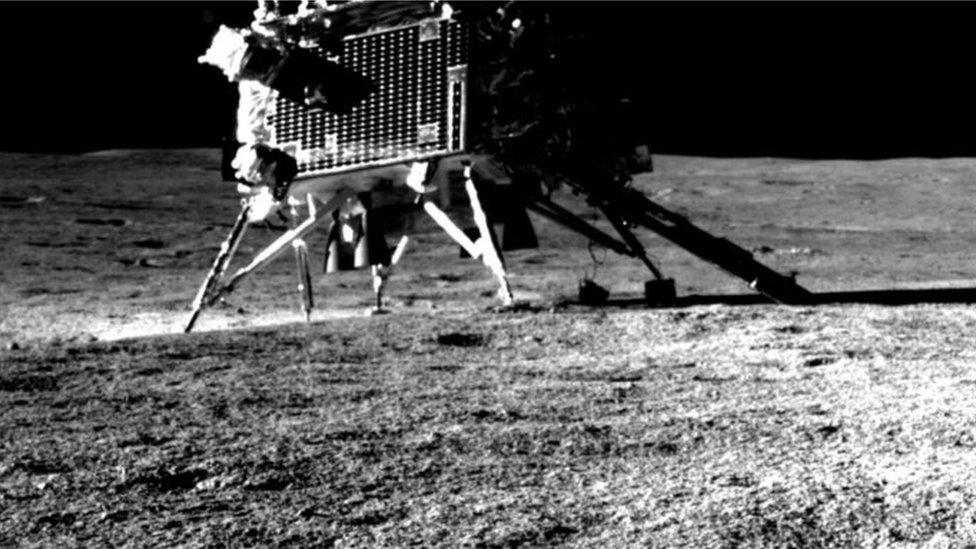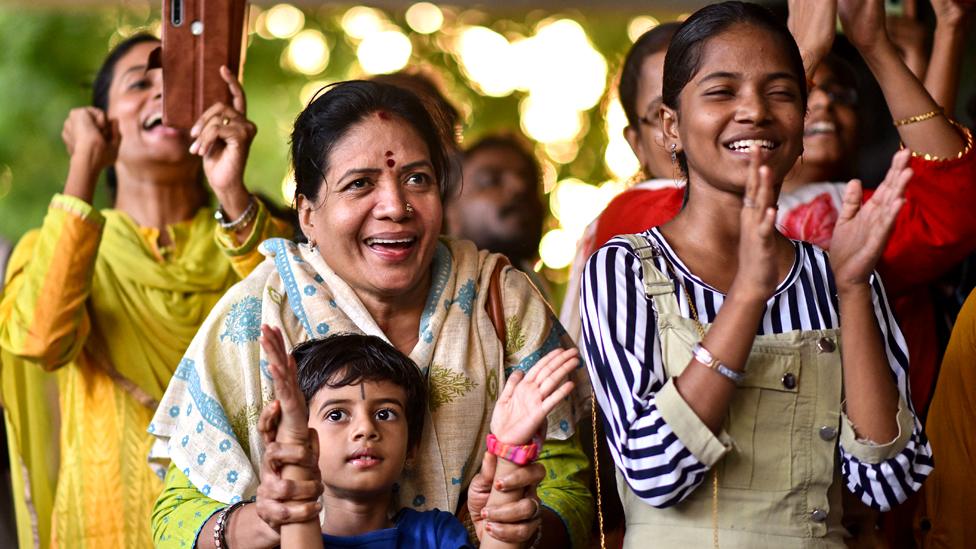Chandrayaan-3: Nasa's lunar orbiter photographs India's Moon lander Vikram
- Published

Chandrayaan-3 lander is seen in the centre of the image released by NASA's Goddard Space Flight Center in Arizona

The US space agency Nasa has released a photograph of India's lunar lander on the Moon's surface.
It shows Vikram lander as a tiny speck in the centre of the image with "its dark shadow visible against the bright halo surrounding the vehicle".
Chandrayaan-3's lander touched down near the Moon's little-explored south pole on 23 August.
Nasa said the camera on its Lunar Reconnaissance Orbiter had snapped the photograph four days later.
Last month, India became the first country to land near the lunar south pole when Vikram lander - carrying a rover called Pragyaan - touched down about 600km (373 miles) from the pole.
It also joined an elite club of countries to achieve a soft landing on the Moon, after the US, the former Soviet Union and China.
The lander and the rover spent about 10 days on the lunar surface, gathering data and images, with the country's space research agency Isro saying they "exceeded their mission objectives".
At the weekend, Isro said the lander and the rover had been put to bed as the Sun began to set on the Moon.
They have been put in "sleep mode" and "will fall asleep next to each other once the solar power is depleted and the battery is drained", it said.
Isro added that it hoped they would reawaken "around 22 September" when the next lunar day starts. The lander and rover need sunlight to charge their batteries and function.
The Indian space agency has provided regular updates on the lander and the rover's movements and findings and shared images taken by them.
Earlier this week, Isro said Vikram had performed a "successful hop experiment" on the lunar surface.
After the Chandrayaan-3's mission's lander was "commanded to fire its engines, it rose up by about 40cm [16 inches] and landed at a distance of 30-40cm", Isro said.
This means that the spacecraft could be used in future to bring samples back to the Earth or for human missions, it added.

A photo of the Vikram lander taken by Pragyaan rover
BBC News India is now on YouTube. Click here, external to subscribe and watch our documentaries, explainers and features.

Read more India stories from the BBC:

Related topics
- Published23 August 2023
